Understanding Warts: Key Causes and Risk Factors
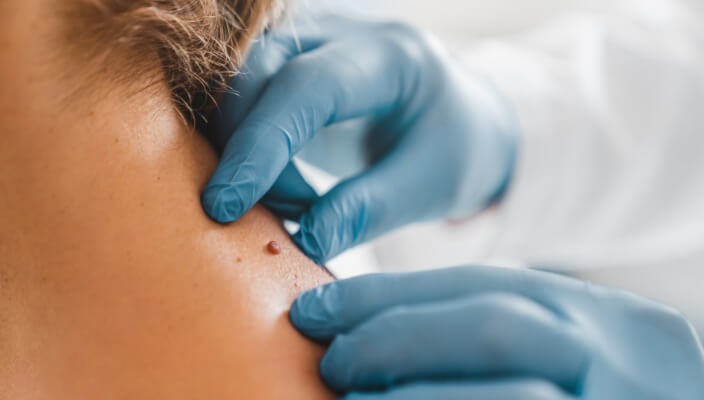 Warts can appear unexpectedly and often cause concern for those affected. Many people wonder what causes these skin growths and if they can be prevented. In this blog, we will explore the different types of warts, the factors that increase the risk of developing them, and effective prevention strategies. By understanding the underlying causes and how immunity plays a role, you can take control of your skin health, reducing the chances of a rash or other complications. Let’s uncover the truth behind warts and how to manage them effectively.
Warts can appear unexpectedly and often cause concern for those affected. Many people wonder what causes these skin growths and if they can be prevented. In this blog, we will explore the different types of warts, the factors that increase the risk of developing them, and effective prevention strategies. By understanding the underlying causes and how immunity plays a role, you can take control of your skin health, reducing the chances of a rash or other complications. Let’s uncover the truth behind warts and how to manage them effectively.
Understanding Warts and Their Types
Warts come in various forms, each associated with distinct characteristics. This blog outlines common wart varieties and recognize uncommon types. Additionally, it examines how warts manifest on the skin, including their various locations, as well as factors such as genetics, drug use, and immunodeficiency, which serve as risk factors for development. Understanding these aspects is essential for effective management and prevention.
Identifying Common Wart Varieties
There are several common types of warts, each caused by different strains of the human papillomavirus (HPV). For instance, common warts usually appear on the hands and fingers, while plantar warts, found on the soles of the feet, often cause discomfort when walking. Consulting a physician can provide clarity on the type of wart and the most effective therapy, which may include topical treatments or the use of a pumice stone to gently remove layers of the wart.
Recognizing Uncommon Wart Types
Uncommon wart types, such as flat warts and genital warts, can manifest in various areas of the body, including the tongue and face, often going unnoticed initially. Flat warts are usually smaller and smoother, frequently appearing in clusters, while genital warts require attention due to their association with certain HPV strains. As a health care provider, I emphasize the importance of discussing any unusual skin changes with a physician to determine the right treatment, which could include vaccines that help prevent certain HPV strains or dietary adjustments that support overall immune health.
How Warts Manifest on the Skin
Warts present themselves on the skin in various forms, often depending on their location and type. For instance, common warts typically develop on the hands or fingers, while flat warts may appear on the face or other areas, sometimes in clusters. Factors such as tobacco smoking and conditions affecting the mucous membrane can increase susceptibility to wart formation. As noted by the American Academy of Dermatology, treatments like trichloroacetic acid can be effective in managing warts, especially when medical intervention is necessary. Understanding how these growths manifest assists in recognizing them early and seeking appropriate care, aligned with guidelines from organizations like the Food and Drug Administration.
Warts present themselves on the skin in various forms, often depending on their location and type, making early recognition and professional care essential for effective treatment.
Causes of Warts
The primary cause of warts is the human papillomavirus (HPV), which infiltrates skin tissue, leading to growths on various body parts. HPV can spread through skin-to-skin contact or contaminated surfaces. Factors such as a weakened immune system may activate the virus, making it crucial to be aware of these routes to prevent the disease. My upcoming sections will detail the transmission pathways, influential factors, and effective preparatory methods like duct tape or acid treatments to manage and screen for warts efficiently.
Role of Human Papillomavirus (HPV)
The primary factor contributing to the formation of warts is the human papillomavirus (HPV), which targets the skin and mucous membranes, including areas like the mouth and genitals. According to the Centers for Disease Control and Prevention, HPV spreads easily through skin-to-skin contact or by sharing surfaces, increasing the risk of transmission in crowded environments. As I understand the implications of HPV, it is essential to be aware of effective preventive measures, such as maintaining good hygiene and avoiding contact with warts to reduce the overall risk of developing these growths.
Transmission Pathways for HPV
The transmission pathways for human papillomavirus (HPV) are critical to understand in the context of warts. HPV spreads through direct skin-to-skin contact, particularly when there are abrasions or cuts, which can sometimes lead to bleeding during infection. Additionally, coming into contact with contaminated surfaces, coupled with exposure to mucus from warts, increases the likelihood of the virus's transmission. Regular physical examination by a professional can help identify any suspicious growths early, and treatments such as cryotherapy or debridement may be recommended to manage existing warts effectively.
Factors Influencing Viral Activation
Several factors can influence the activation of the human papillomavirus (HPV) and, consequently, the development of warts. A weakened immune system can make one more susceptible, as the body is less able to fight off infections. Additionally, injuries to the skin, such as cuts or abrasions, particularly around sensitive areas like the lips or throat, can create openings for HPV to enter. Procedures involving liquid nitrogen, which is used for cryotherapy, may help eliminate existing warts but might also temporarily increase viral activation in some cases. Understanding these factors is crucial for reducing the risk of wart formation and managing any existing warts effectively through various treatment options, including injections that target the virus directly.
Examples of Warts
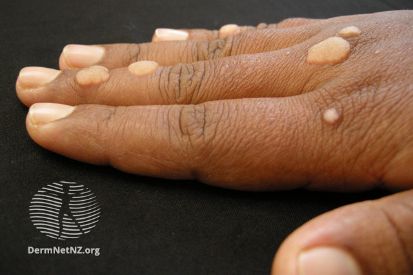
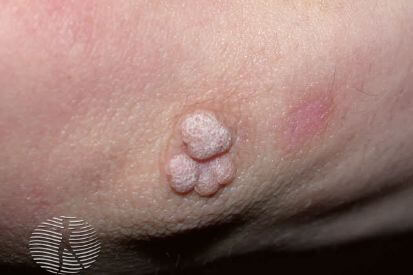
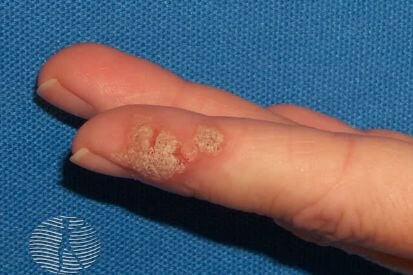
Risk Factors for Developing Warts
Several factors contribute to the development of warts, including the health of the immune system, age, and existing skin conditions. Young individuals and those with compromised immune systems are at a higher risk. Behavioral risks, such as nail biting, can cause inflammation and increase exposure to the human papillomavirus (HPV). In the following sections, I will discuss these risk factors in more detail, including the impact of medication, pain management, and freezing treatments.
The Impact of Immune System Health
The strength of your immune system plays a crucial role in your susceptibility to warts. When the immune system is compromised, whether due to medical conditions or the side effects of treatments like laser surgery, the body is less capable of fighting off infections such as the human papillomavirus (HPV). Clinical trials have shown that individuals with weakened immune responses are at a greater risk for developing warts, making it essential to support immune health through proper nutrition and care.
Age and Its Influence on Wart Formation
Age serves as a significant risk factor for the formation of warts, particularly in children and young adults. The immune system's ability to combat the human papillomavirus (HPV) decreases with age, often making older individuals more susceptible to warts. In my experience, younger patients may benefit from treatments like imiquimod, which can enhance immune response, while older patients may require surgical interventions to remove persistent warts. Understanding the interplay between age and skin cell behavior is essential for identifying effective treatment plans tailored to each individual's needs.
The Connection Between Skin Conditions and Warts
There is a significant connection between existing skin conditions and the likelihood of developing warts. Conditions that compromise the integrity of the skin, such as eczema or psoriasis, can create openings for the human papillomavirus (HPV) to enter, increasing the risk for growths that may resemble cauliflower. Additionally, maintaining a robust immune system is essential; weakened immune defenses make it more challenging for the body to fend off HPV. Engaging in safe sex practices can further reduce exposure risk, as certain skin conditions may heighten vulnerability to HPV transmission. Research shows that people with active skin issues require careful monitoring for warts, making it vital to consult healthcare professionals for tailored prevention strategies.
Behavioral Risks Associated With Warts
Behavioral risks significantly impact the likelihood of developing warts, as certain habits can increase exposure to the human papillomavirus (HPV). For example, nail biting not only exposes the skin to potential infections but may also lead to itchiness and inflammation, creating an environment for papilloma growth. It's essential for individuals to be mindful of these behaviors to decrease their overall risk, particularly since some HPV strains are associated with skin conditions that require medical evaluation to rule out more serious concerns such as skin cancer.
Prevention Strategies for Warts
Implementing effective practices to reduce HPV exposure is key in preventing warts. Prioritizing skin care and hygiene can significantly lower your risk, while vaccination against HPV offers an added layer of protection. In the following sections, I’ll discuss these prevention strategies in detail, providing practical insights to help reduce exposure to the virus and maintain healthy skin.
Effective Practices to Reduce HPV Exposure
To effectively reduce HPV exposure, maintaining good hygiene practices is critical. I recommend regularly washing your hands and avoiding direct contact with warts on yourself or others to minimize transmission risks. Additionally, wearing protective footwear in communal areas, such as public showers or pools, can help protect your feet from plantar warts while promoting overall skin health.
Importance of Skin Care and Hygiene
Maintaining proper skin care and hygiene is essential in preventing the development of warts. By regularly washing your hands and keeping your skin clean, you reduce the risk of HPV entering through cuts or abrasions. I often advise patients to moisturize dry skin, as healthy skin barriers can further protect against viral infections and help minimize the likelihood of wart formation.
Vaccination Against HPV
Vaccination against human papillomavirus (HPV) is a vital tool in preventing warts and reducing the risk of HPV-related diseases. I encourage my patients to consider vaccination, as it helps in protecting against the strains of HPV most commonly associated with warts and other complications. By getting vaccinated, individuals can significantly decrease their chances of developing not only warts but also other issues that arise from HPV infection, thus promoting healthier skin and overall well-being.
Common Misconceptions About Warts
Separating myths from facts is essential when discussing warts. Many people hold misconceptions about their causes and the stigma surrounding them. I will address common myths about warts and clarify the significance of understanding these misconceptions, ultimately promoting a more informed perspective on this common skin condition.
Separating Myths From Facts
Many misconceptions surround warts, leading to misinformation about their causes and treatment. For instance, some believe warts are contagious solely through casual contact. In reality, transmission often requires direct skin-to-skin contact or exposure to contaminated surfaces, emphasizing the importance of hygiene and precaution. Clarifying these myths helps reduce stigma and encourages individuals to seek appropriate care without unnecessary fear.
Understanding the Stigma Around Warts
The stigma surrounding warts often stems from misconceptions about their transmission and appearance. Many people mistakenly believe that having warts indicates poor hygiene or serious health issues, which can discourage them from seeking treatment. In my experience, understanding that warts are quite common and primarily caused by the human papillomavirus (HPV) can help alleviate these fears, encouraging individuals to address their concerns openly and seek effective solutions without embarrassment.
Seeking Professional Help for Warts
Recognizing when to seek professional help for warts is crucial. Signs that indicate a need for medical consultation include warts that change in size, color, or shape. In the next sections, I'll discuss various treatment options available and their effectiveness in managing warts. Understanding these options allows for informed decisions on proper care.
Signs That Indicate a Need for Medical Consultation
When monitoring warts, it's essential to recognize signs that necessitate professional consultation. If you notice any changes in size, color, or shape of existing warts, or if they become painful, bleeding, or show signs of infection, seeking medical advice is crucial. Additionally, if new warts appear rapidly or you experience multiple growths, I recommend consulting a healthcare provider to explore appropriate treatment options and rule out other skin concerns.
Treatment Options and Their Efficacy
When discussing treatment options for warts, several methods are available, depending on factors like the wart type and location. Topical treatments, such as salicylic acid, work by gradually dissolving the wart tissue, while procedures like cryotherapy involve freezing the wart to remove it effectively. In my experience, combining approaches often yields the best results, and I encourage patients to consult with a healthcare provider to determine the most suitable treatment based on their specific needs and the warts’ characteristics.
Conclusion
Understanding warts, including their causes and risk factors, is essential for effective prevention and management. The human papillomavirus (HPV) primarily drives their formation, making hygiene and awareness critical in reducing transmission risks. Recognizing the significance of immune health and behavioral habits can greatly influence wart susceptibility. By grasping these concepts, individuals can take proactive steps to maintain healthy skin and seek timely medical assistance when needed.
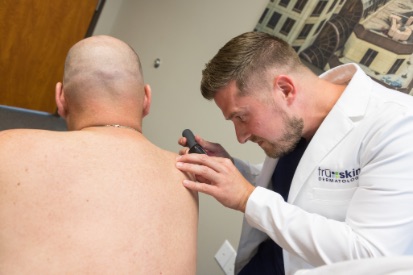
Are you ready to take the next step in treating your warts?
At Tru-Skin Dermatology in Austin, Texas, our experienced team is dedicated to providing personalized care and effective treatment options for all skin concerns. Whether you're dealing with common or more unusual wart types, we’re here to help you achieve clear, healthy skin. Schedule an appointment today, and let us guide you toward the best solution for your needs.
Featured Sunscreens

EltaMD UV Clear SPF 46 original
Oil-free EltaMD UV Clear helps calm and protect sensitive skin types prone to discoloration and breakouts associated to acne and rosacea. It contains niacinamide (vitamin B3), hyaluronic acid and lactic acid, ingredients that promote the appearance of healthy-looking skin. Very lightweight and silky, it may be worn with makeup or alone. Choose from tinted and untinted formulas for use every day. 1.7 oz / 48 g
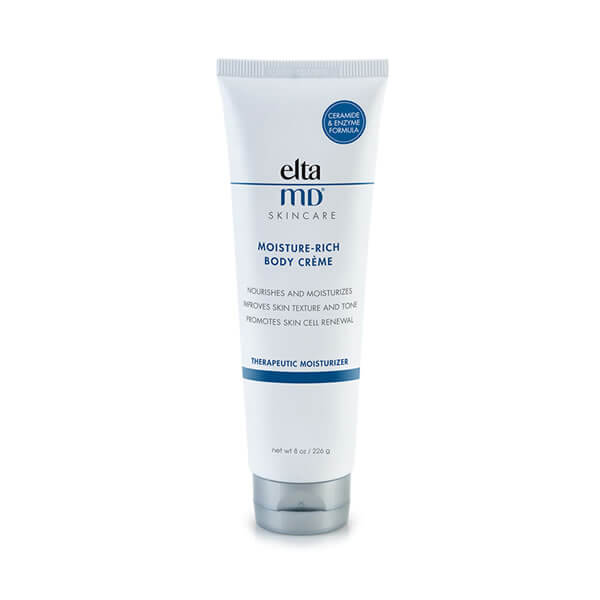
EltaMD Moisture-Rich Body Cream
EltaMD Moisture-Rich Body Crème infuses compromised and dry, flaky, sensitive skin with long-lasting moisture and essential nutrients. It is the ideal daily moisturizer to help achieve and maintain softer, smoother, healthy-looking skin. 8 oz / 226 g
Related Blogs
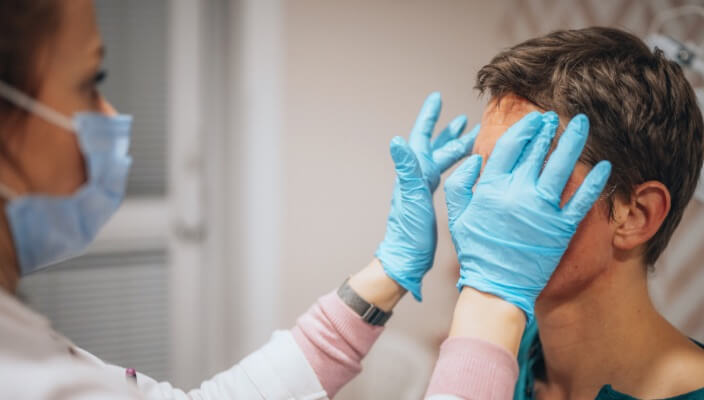
- Skin Cancer
- General Dermatology
- Cosmetic Treatments
At Tru-Skin Dermatology, we offer a wide range of common dermatology procedures to patients throughout Austin, TX, and the surrounding areas. Read this blog to learn more about how we can help you achieve your skin goals.
Read More
- Skin Cancer
- Skin Exams
- Sun Safety
Discover the importance of full body skin cancer screenings, especially for Texans with high sun exposure. Learn what to expect during your screening at Tru-Skin Dermatology in Austin, TX, and take control of your skin health.
Read More
- General Dermatology
- Skin Care
- Chronic Skin Conditions
Tru-Skin Dermatology provides expert advice and treatment options for hyperpigmentation in Central Texas. Empowering you to achieve healthier skin.
Read More


